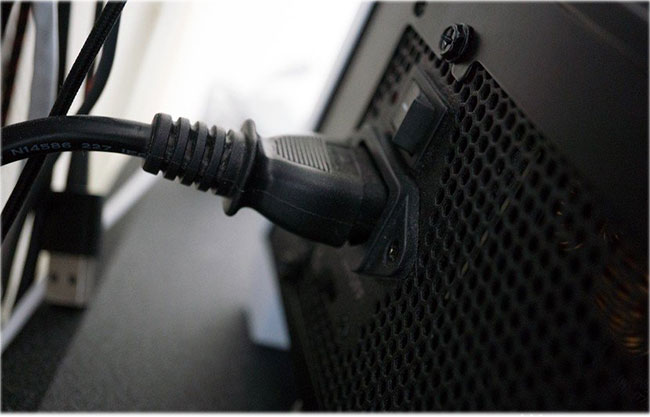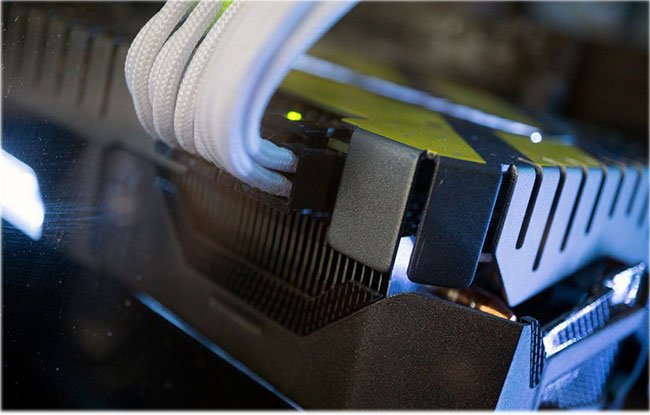How to install a new graphics card (GPU) in the PC
Equipping a new, more powerful graphics card can make a difference when playing games on a PC. And because you haven't completely rebuilt your PC, this is not a complicated and terrible task. However, it can still be annoying for those who have never opened the computer before. Fortunately, with a little help, the right tools and 10 minutes of free time, you can install a new graphics card (GPU) in your PC right away.
How to install a new GPU in a PC
The main parts of this task are related to the case and the PCIe slot on the motherboard. Most GPUs sold today are connected to a PC via this PCIe slot. A motherboard may have multiple slots, but you should use the first slot (x16), which usually has the widest bandwidth. The x4 slot is shorter and can be used for other expansion cards (such as WiFi cards) and secondary x16 slots are usually reserved for additional GPUs or expansion cards.
Prepare your PC for a new GPU
Before installing a new card, you need to make sure the old drivers for the card you replace are uninstalled. If you are installing a new GPU and have never owned a dedicated card, you can skip this part. Both NVIDIA and AMD provide resources to complete this step. You can refer to at:
There is a handy tool that can completely remove the GPU driver on Windows, called Display Driver Uninstaller. Using this utility is optional, but it can prove useful in removing all driver versions from Windows. After removing the driver, it's time to open the PC and start.
You should also check the PSU to make sure it can handle dedicated GPUs (if you haven't already installed it) or upgrade it more aggressively. In general, you will want to have the 500W PSU from a reputable brand, although the 600W + model will be better suited for overclocking.
Install a new graphics card
1. Turn off the PC.
 Turn off the PC
Turn off the PC 2. Press the switch on the back of the PC to turn off the power to the PSU.
3. Remove the side shield (usually fixed with 2 screws on the back).
If you haven't already, go to step 7.
4. Remove the screws that hold the GPU to the rear bracket.
 Remove the screws that hold the GPU to the rear bracket
Remove the screws that hold the GPU to the rear bracket 5. Open the PCI-e slot.
6. Remove the GPU by gently pulling the card.
7. Insert the new GPU into the PCI-e slot.
 Insert the new GPU into the PCI-e slot
Insert the new GPU into the PCI-e slot 8. Press the GPU down so it goes deep into the slot.
9. Ensure the safety lock is in place.
10. Tighten to fix the card to the frame.
11. Connect any necessary PSU cables.
 Connect any necessary PSU cables
Connect any necessary PSU cables 12. Reinstall the side shield.
Now, all you need to do is plug in the display connectors on the back of the case, whether they're DisplayPort, HDMI, DVI or VGA. Then, press the PSU power switch and start Windows. If the PC does not turn on or no signal is sent to the screen, you will need to double check that all cables are properly connected (both inside and behind the PC), as well as that the GPU is correctly placed. position in the PCIe slot yet.
Install the necessary drivers
Before the GPU can be used for heavy workloads like gaming, you need to install new drivers so that Windows and the software can communicate effectively with the card. Click the links below to download and install the driver for the new NVIDIA or AMD card.
- Download the AMD driver : https://www.amd.com/en/support
- Download the NVIDIA driver : https://www.nvidia.com/Download/index.aspx
For details, readers can refer to the article: How to update the driver for the NVIDIA video card.
You should read it
- Top 7 best AMD graphics cards (GPUs) 2020
- 7 things you need to know about integrated and dedicated graphics cards
- Use GPU-Z to analyze graphics card parameters
- How to install RTX Voice on a GTX card in Windows
- How to speed up onboard graphics card on window
- How does the Intel HD Graphics 520 graphics card perform?
 Review the LG UltraGear Curved QHD Nano IPS 34 inch
Review the LG UltraGear Curved QHD Nano IPS 34 inch How does a mechanical keyboard work?
How does a mechanical keyboard work? AMD Ryzen 5 3600X Review: Great multi-threaded support, overclockable
AMD Ryzen 5 3600X Review: Great multi-threaded support, overclockable 6 best PS4 keyboard and gaming combos
6 best PS4 keyboard and gaming combos Learn about DDR5 RAM: The new standard for RAM
Learn about DDR5 RAM: The new standard for RAM Compare DDR3 and DDR4
Compare DDR3 and DDR4